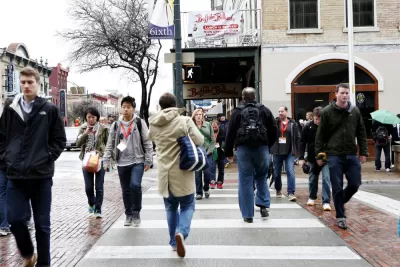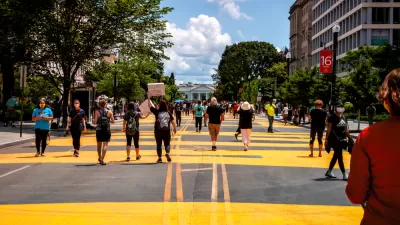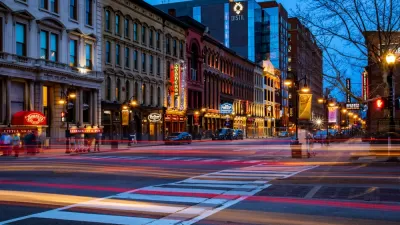In 2015, Austin, Texas adopted a Vision Zero goal to reach zero traffic fatalities.

After three consecutive years of declining traffic fatalities, following the adoption of Vision Zero goals in 2015, the city of Austin had a tragic 2019, followed by a tragic January, according to an article by Cailin Crowe. The city reported 11 fatalities, a tripling of the total from the same timeframe in the previous year.
"Despite a number of recent road safety improvements, including new protected bike lanes and even a car-free street pilot [Planetizen coverage of the Rainey Street entertainment district], Austin is facing struggles that are emblematic of the challenges many cities across the country are experiencing as they work toward the ambitious goal to have zero pedestrian, cyclist or motorist deaths on their streets," writes Crowe.
The article includes soundbites from local and national traffic safety efforts, who describe the challenges facing Vision Zero implementation and a few insights about how to overcome the largest remaining obstacles to streets and roads that are safe for all users.
FULL STORY: Austin, TX traffic fatalities nearly triple in January

Trump Administration Could Effectively End Housing Voucher Program
Federal officials are eyeing major cuts to the Section 8 program that helps millions of low-income households pay rent.

Planetizen Federal Action Tracker
A weekly monitor of how Trump’s orders and actions are impacting planners and planning in America.

Ken Jennings Launches Transit Web Series
The Jeopardy champ wants you to ride public transit.

Washington Legislature Passes Rent Increase Cap
A bill that caps rent increases at 7 percent plus inflation is headed to the governor’s desk.

From Planning to Action: How LA County Is Rethinking Climate Resilience
Chief Sustainability Officer Rita Kampalath outlines the County’s shift from planning to implementation in its climate resilience efforts, emphasizing cross-departmental coordination, updated recovery strategies, and the need for flexible funding.

New Mexico Aging Department Commits to Helping Seniors Age ‘In Place’ and ‘Autonomously’ in New Draft Plan
As New Mexico’s population of seniors continues to grow, the state’s aging department is proposing expanded initiatives to help seniors maintain their autonomy while also supporting family caregivers.
Urban Design for Planners 1: Software Tools
This six-course series explores essential urban design concepts using open source software and equips planners with the tools they need to participate fully in the urban design process.
Planning for Universal Design
Learn the tools for implementing Universal Design in planning regulations.
Heyer Gruel & Associates PA
Ada County Highway District
Institute for Housing and Urban Development Studies (IHS)
City of Grandview
Harvard GSD Executive Education
Toledo-Lucas County Plan Commissions
Salt Lake City
NYU Wagner Graduate School of Public Service





























